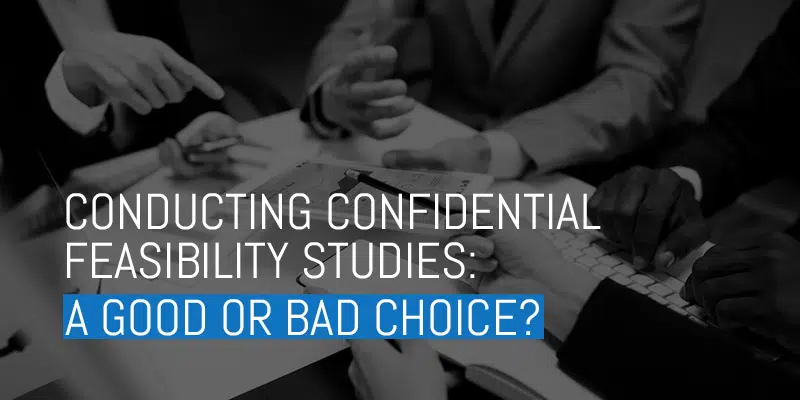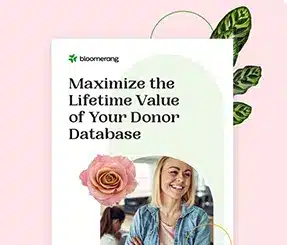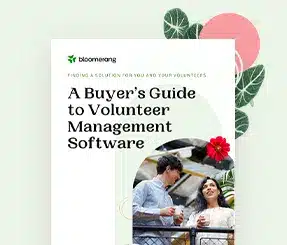Conducting Confidential Feasibility Studies: A Good or Bad Choice?


Full Platform Overview Chat With Us



Full Platform Overview Chat With Us





As many organizations begin eyeing the post-COVID fundraising landscape, many may find themselves in need of increased capacity to better serve their communities and drive their missions forward.
For these nonprofits, the pandemic brought about simultaneous surges in both support and need for their services—an exciting but certainly unprecedented and potentially stressful challenge. In many cases, the answer is to launch a capital campaign or other major campaign built around growing capacity.
Since these campaigns can be such time- and resource-intensive projects, it pays to give the entire process plenty of upfront thought. You’ll undoubtedly encounter the many books and online guides written about capital campaigns along the way, but there’s one area we’d like to focus on specifically: the feasibility study.
Capital campaign feasibility studies are a critical early step in the planning process, and there are both traditional and new approaches to consider.
Many organizations are locked into a traditional view of feasibility studies involving confidential interviews, but we at the Capital Campaign Toolkit argue that this isn’t always the best choice. A confidential feasibility study can actually significantly limit the value that you ultimately derive from the process.
Why? We’ll make our case and explain an alternative approach below, but first, let’s start with the fundamentals.
A feasibility study is conducted during the early planning stage of a capital campaign. It consists of a series of interviews with your nonprofit’s leaders, key partners, major donors, and other organization stakeholders.
During these interviews, you (or a consultant) will ask questions to gauge your stakeholders’ thoughts and opinions on your campaign’s objectives, initial fundraising goal, potential concerns, and the campaign’s overall feasibility. Their responses will inform the study’s ultimate findings and recommendations, which you’ll then use to shape your plans.
These studies are meant to safeguard your time, energy, and resources, showing you early if the key players you’ll rely on during the campaign are interested and up to the task.
There are three general approaches you can take to conduct campaign feasibility studies:
For most nonprofits to gain the best long-term value, we recommend the third approach: guided feasibility studies. We’ll dig into the specific reasons why below, but the main idea is that this approach gives you flexibility. There’s no one way to conduct a feasibility study, and your interviewees’ responses certainly don’t need to be confidential.
We say no. There are a number of major potential drawbacks to a closed-door, hands-off approach to feasibility studies. Here are our thoughts:
We believe that the feasibility study is an invaluable opportunity for your nonprofit. You should actively participate in it and learn from its findings, not passively receive recommendations.
In practice, actively participating in a feasibility study means conducting the interviews yourself with the help or coaching of a capital campaign expert. We believe this is the most flexible and useful approach for any fundraising context.
Specifically, a guided, hands-on approach brings these benefits:
Beyond the campaign itself, the direct engagement of a guided approach can ultimately strengthen your long-term donor retention efforts. Plus, it makes all of your later communications and post-campaign follow-up that much more personal. When donors receive thank-you messages or attend recognition events, they’ll know just how much their input meant for the success of your campaign.
Of course, many nonprofits are likely to feel some hesitation about abandoning the consultant-led model of feasibility studies. While the drawbacks of this traditional approach should definitely come into consideration as you plan your campaign, you likely have some additional concerns.
These are the most common reasons we hear from nonprofits about why they’re hesitant to conduct their own feasibility study interviews:
Those are valid concerns, but we’re not sure they hold up. Here’s why:
Looking at the most common concerns nonprofits have about guided feasibility studies from this perspective, the long-term benefits of taking a more hands-on approach are clear. Your relationships with major donors and stakeholders are critically important for your mission. If you don’t play a role and instead outsource the entire process to a consultant, you’re missing out on extremely valuable opportunities to advance your campaign and your mission over the long run.
If your organization is preparing for a capital campaign in the coming years, the exact approach you choose to take to your feasibility study will naturally depend on many factors.
The main idea is to make your campaign your own and to generate as much long-term value from the experience as possible.
The feasibility study is an important part of the complete capital campaign process. It starts your campaign off on the right foot and gives you the initial direction you need in order to use your time and resources most effectively. Just don’t let valuable opportunities to learn, grow, and strengthen your relationships fall by the wayside.
In some cases, a hands-off approach led by a consultant or a looser DIY approach can be the right choice. You’ll need to think carefully about your organization’s own goals and needs as you make your decision. Overall, however, we believe that active participation guided by professionals will be your best bet, especially if this is your very first capital campaign.

Comments